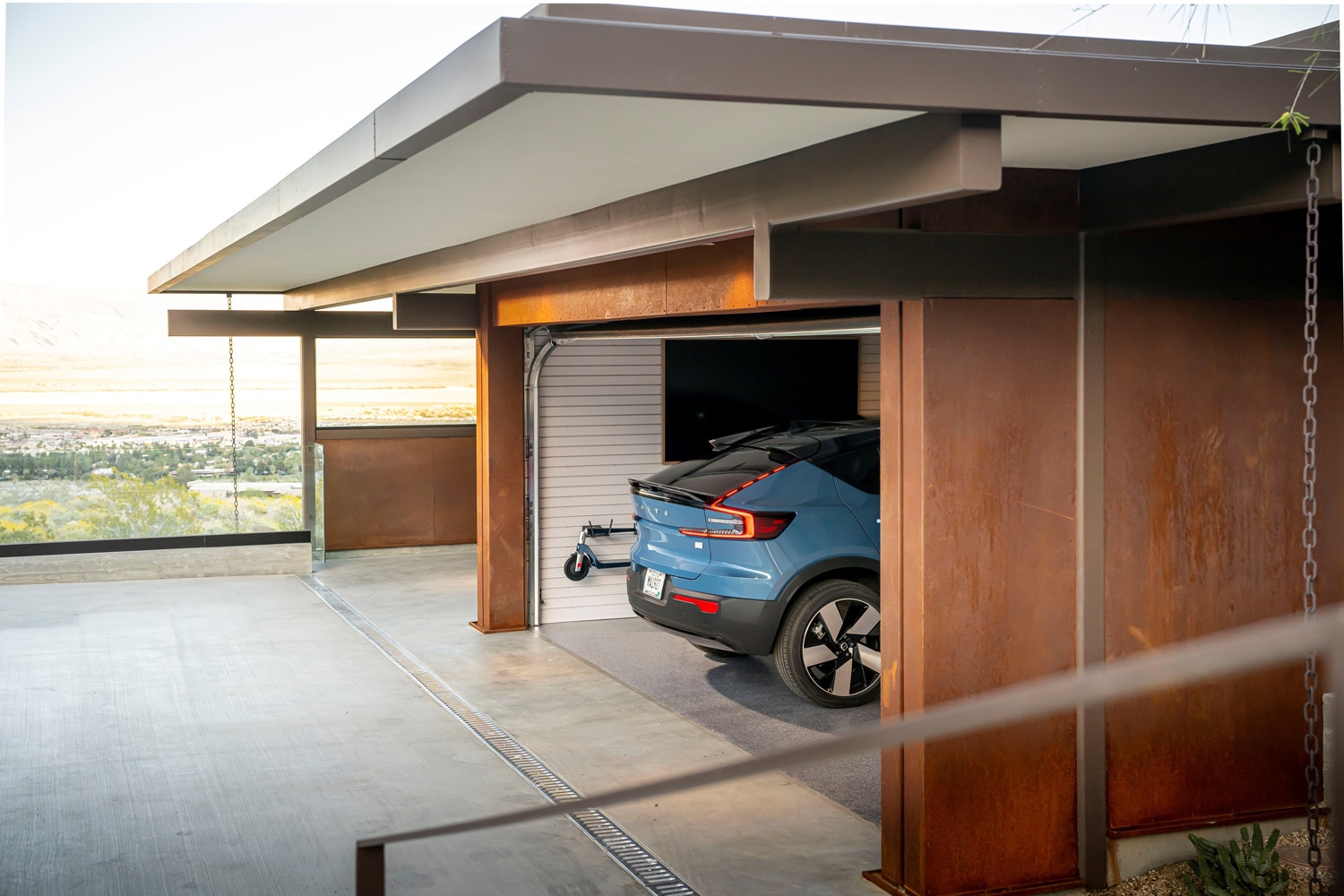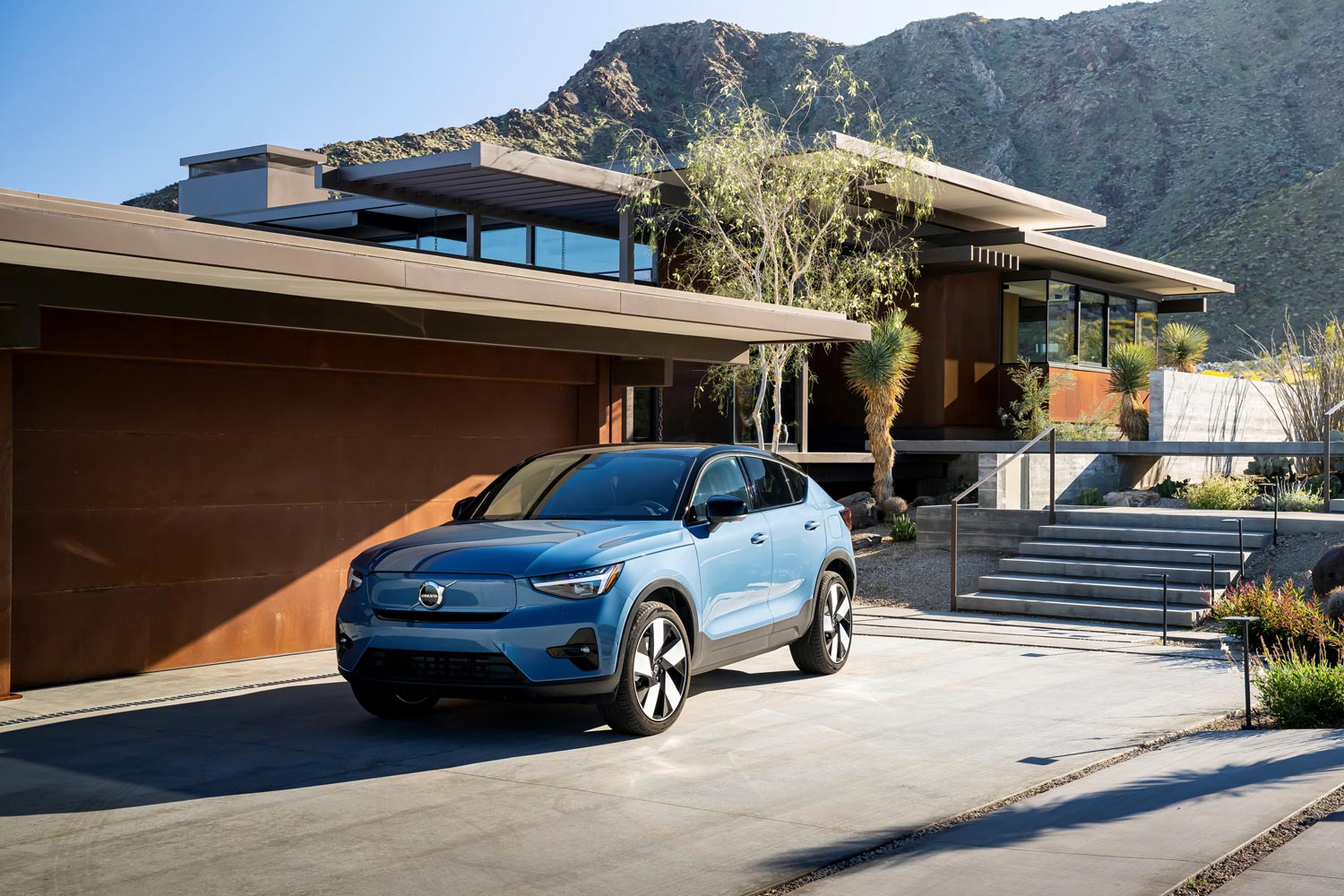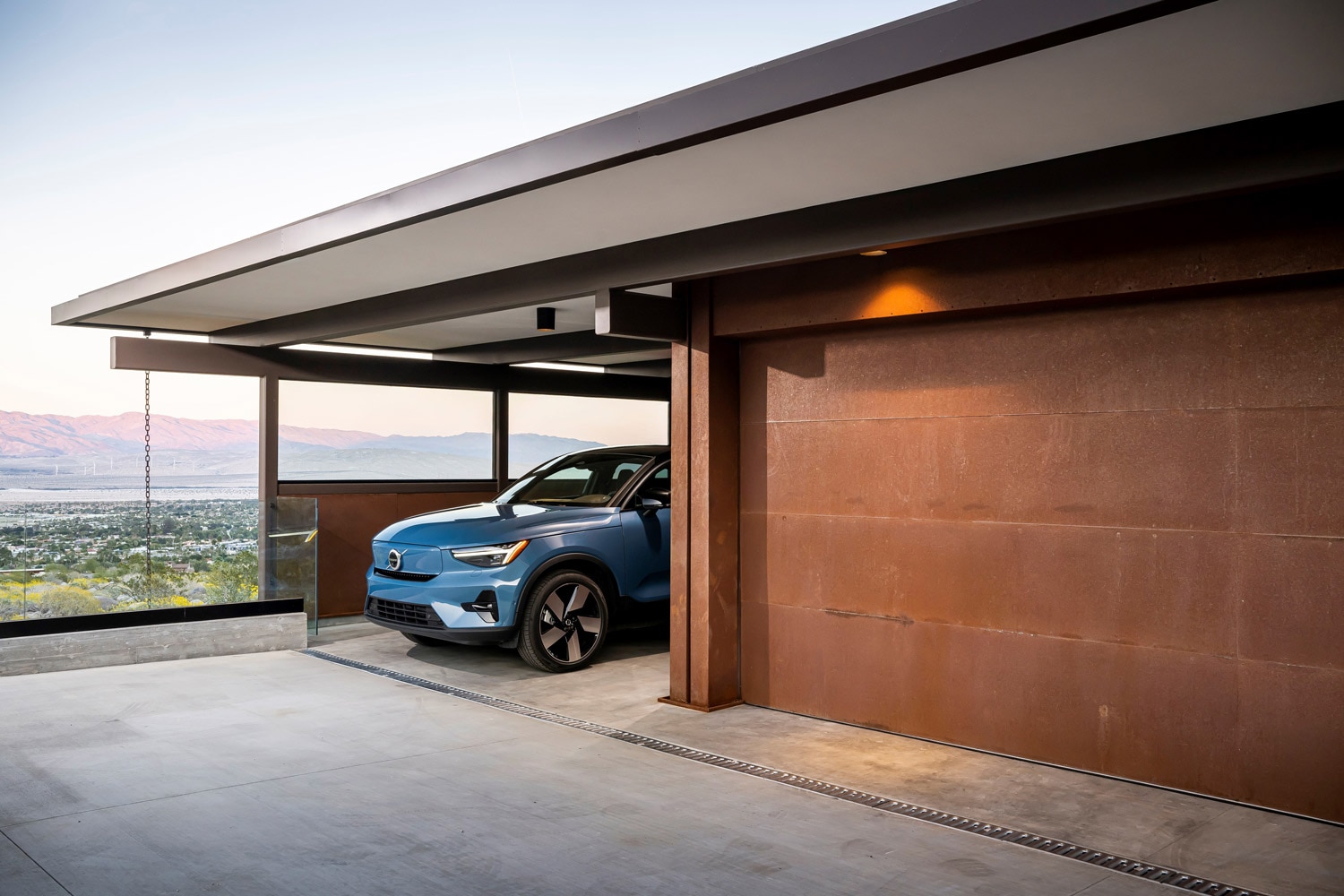Parking Your Car Outside Rather Than in the Garage Could Cost You
The elements can hurt your vehicle's resale value.
 Volvo
Volvo
Article QuickTakes:
If you use your garage as a giant closet, you are not alone. A 2022 survey conducted for Craftsman revealed that, of those surveyed, more than a third of vehicle owners with garages do not park their cars inside because they're using that space to store other things.
Parking your car outside leaves it exposed to environmental hazards that can adversely affect the resale value. The insurance company Hagerty says that while garage storage isn't required in order to insure your classic or collector car, the company suggests it. Sunlight, rain, acidic bird droppings, wind-blown trees, and extreme weather events such as hail can damage your vehicle's cosmetic appeal.
Is that enough to get you to hold a garage sale?
 Volvo
Volvo
Rating Your Car's Condition
While it may be difficult to pinpoint an exact value of garaging your car versus leaving it outdoors, you can arrive at a rough estimate.
Based on information you provide to KBB, the site will give your car one of four ratings. Half of used cars fall into the Good category, according to KBB, while 28 percent are Very Good, and 2 percent qualify as Excellent. The remaining 20 percent are considered Fair.
Here's what the top three levels mean:
- Excellent: Looks new and is in excellent mechanical condition.
- Very Good: Has minor cosmetic defects and is in excellent mechanical condition.
- Good: Has some repairable cosmetic defects and is free of major mechanical problems.
 Volvo
Volvo
Small Imperfections Can Make a Difference
You may think your car deserves an Excellent rating, but does it? KBB's executive editor Brian Moody said Excellent means that every single thing on the vehicle works as new and the car has no damage or blemishes.
"Some cars could look amazing outside," Moody said, "but there could be a mechanical or interior issue. That difference might move a car down to Very Good. Adding varying signs of normal wear and tear like a touch of dulled paint, minor scratches, parking-lot dings, foggy headlights, and perhaps some interior fading could lower that to Good."
Many of those issues could relate to whether a car is garaged or parked outside. "That's not to say that sun damage or fading could not be repaired," Moody said. "But that costs money and is usually what dealers do with reconditioning, not what private parties do."
 Volvo
Volvo
Garage Storage Can Mean Thousands of Resale Dollars
The difference between a Very Good and Good rating, according to the Blue Book, could be thousands of dollars. While mileage and mechanical condition are crucial when it comes to resale value, the vehicle's appearance is a big factor.
To illustrate the difference in value a car's appearance can make, we filled in the
In Good condition, KBB suggests an average private-party sale value between about $27,200 to $29,400, with an average value of $28,300. Selecting Very Good, we saw $27,900 to $29,800, with an average of $28,800.
An Excellent model likely kept in a garage would net between $28,300 and $30,200, with an average value of $29,300. That’s a $1,000 increase on a car that’s just two years old.
The difference grows with older models. Dialing back to a 2017 CR-V LX front-wheel drive with 55,000 miles, we found the range increased from $20,700 for a Good model to $23,400 for an Excellent one.
"An owner using an available garage for storage or other purposes," Moody said, "needs to decide if that's worth losing some money that they would otherwise be getting."



